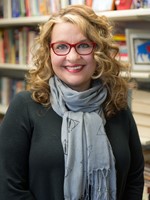Presenters
Matthew Kruger-Ross, Ph.D. is an Associate Professor in the Department of Educational Leadership and Higher Education Administration. He teaches graduate courses on educational technology, curriculum, and research methodologies. Matthew’s research interests include the philosophy of education and technology and its impact on educational practice, curriculum theory as it relates to teaching and being a teacher, and the intersection of philosophy of education and the hermeneutic phenomenology of Martin Heidegger.
Pauline Schmidt, Ph.D. is a Professor of English Education in the Department of Secondary Education at WCUPA. She is also the Director of the West Chester Writing Project. Her teaching and research interests include the infusion of the arts in English Education, diversifying the canon of literature for children and young adults, and the impact of new literacies on curriculum and teacher preparation.
Session description
Learn more about Four I Multimodal Strategies (FIMS), a multimodal set of strategies that can be used to help secondary students consume and produce texts, made possible by the influx of new and emerging technologies. Digital texts that will be analyzed include infographics, memes, videos and podcasts.
Purpose & objective
Participants will be able to utilize the FIMS strategies to interpret and consume digital texts
Participants will be able to utilize the FIMS strategies to create and produce digital texts
Participants will be able to integrate FIMS strategies into their secondary humanities classrooms
Participants will be able to appreciate the power of digital texts through the FIMS strategies
More [+]
Outline
2 minutes - Overview and Introduction to Presenters
10 minutes - Overview of FIMS strategies for consuming and producing
10 minutes - Example of consuming digital text using FIMS
3 minutes - Brainstorm using FIMS to create digital text
5 minutes - Wrap-up and Questions
More [+]
Supporting research
FIMS is a unique set of interpretive moves developed from our own research with 7-12 preservice teachers and humanities educators.
We have just published a book that traces these strategies through the secondary ELA classroom, and want to share with a wider audience of teachers who are familiar with digital texts.
More [+]


